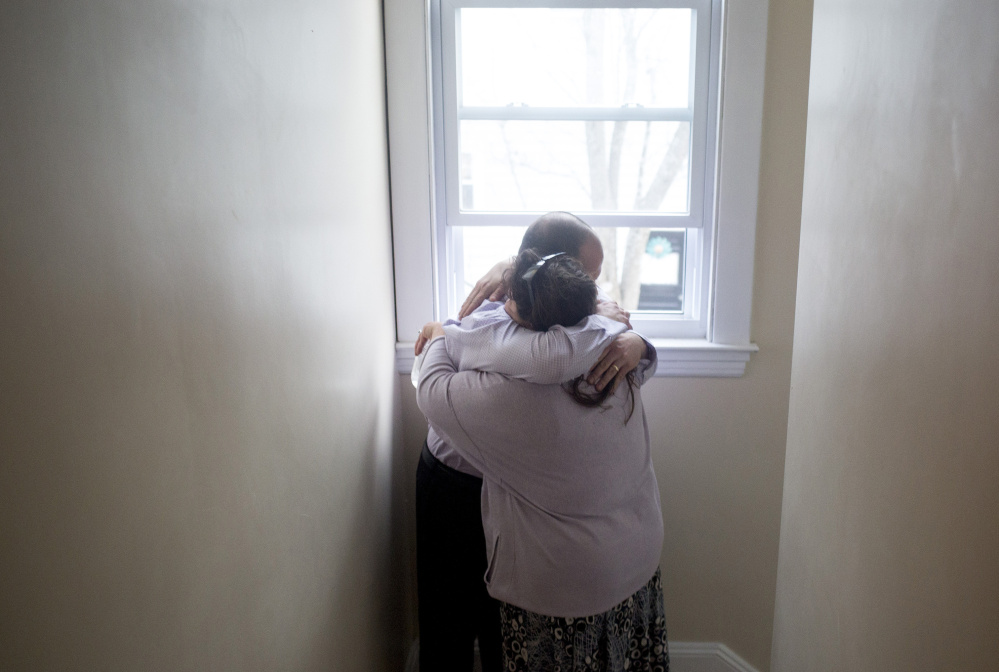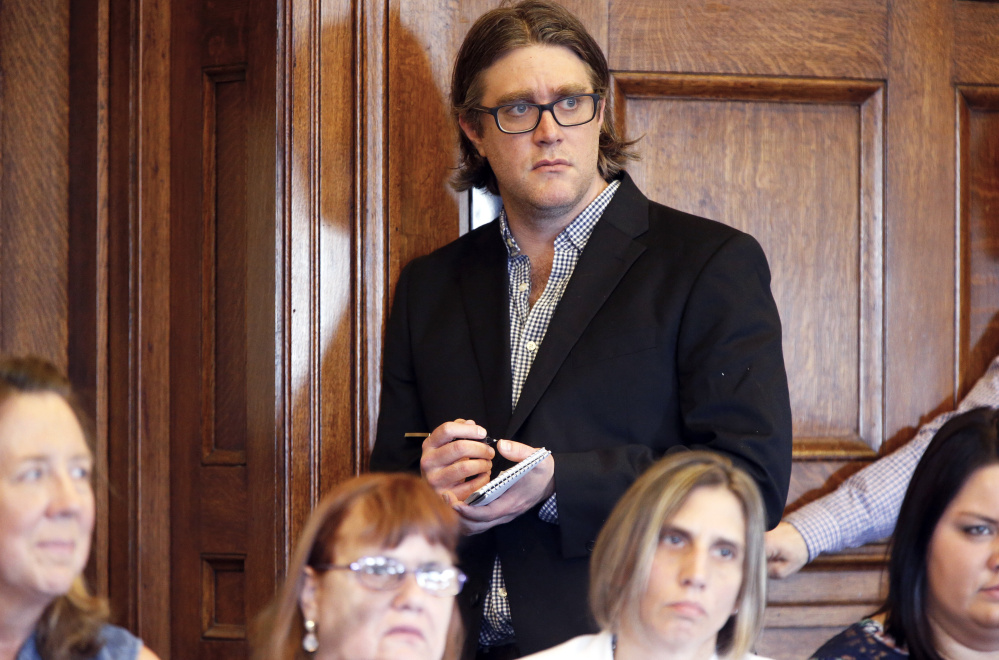In a trial transcript that stretches for nearly 1,800 pages, it was a brief exchange of only 15 lines that would lead Amy Fairfield down the rabbit hole.
It was May 2016, and Fairfield, a Kennebunk attorney, was asked to help a colleague at her practice, Kevin Moynihan, with the post-conviction petition of Anthony Sanborn Jr.
Sanborn was 20 when he was sentenced in 1993 to serve 70 years for the brutal murder of Jessica L. Briggs, 16, on Portland’s waterfront.
And although the case was at first billed as an opportunity to use DNA evidence to pursue an exoneration, the short passage in the transcripts that caught Fairfield’s eye seemed too glaring to be true.
Hope Cady, the only eyewitness to the killing, had admitted during trial that she had vision problems. But as quickly as it emerged, the question of a key eyewitness’ ability to see was never revisited.
How in the world, Fairfield wondered, could this not have been more important?
“I said, ‘all right, let’s start interviewing people, because this looks like more,’ ” Fairfield said. “I’ve been down dozens of foxholes chasing stuff down. There’s just so many unresolved issues. Once the fixation began, it was a scorched earth type of hunt.”
Since then, the case has consumed her, absorbing her every free hour for 11 months, and countless hours of work by a team of people – including an independent journalist, John Rudolf – working to unearth new evidence.
The effort culminated in a hearing Thursday in Portland Unified Criminal Court where, under questioning from Fairfield, Cady, now an adult living in Augusta, recanted her eyewitness account of the killing. The judge granted Sanborn bail, nearly 30 years after he was first imprisoned.
He is the first in Maine to win his freedom after being convicted of murder, bringing him closer to an exoneration than anyone has ever come before.
The effort to free him began largely with Sanborn filing his own appeal for re-evaluating the potential DNA evidence in the case, but eventually involved countless hours of work by his wife, Michelle Sanborn, and a cadre of others who were there to greet him when he walked out of Cumberland County Jail.
Fairfield, Rudolf and Kevin Cady, the private investigator working for Fairfield, were among the throng of people who embraced him.
Kevin Cady said he knew from the start that the facts of the case fed Fairfield’s drive to dig into the material as deeply as possible.
“I think that Amy Fairfield is best when she’s passionate about her cases,” Kevin Cady said. “This case, you can tell, she’s passionate about.”
Cady said that Rudolf, who had already been researching Sanborn’s situation for more than a year, had paved the road ahead of them.
“I was able to hit the ground running because he was the encyclopedia,” Kevin Cady said. “This was a behemoth, it was a monstrosity.”
Sometimes Rudolf’s prior interviews with important witnesses gave the defense team a head start.
Rudolf’s command of the facts helped fill in blanks, Kevin Cady said.
Fairfield said after committing to become a bigger part of the investigation, she began arranging interviews with Hope Cady’s biological family, who informed her of Cady’s persistent and longstanding vision problems that date to her childhood.
“Right away, every interview we did was pay dirt,” Fairfield said.
She then requested access to the confidential Department of Health and Human Services file that detailed Hope Cady’s early childhood, including her medical history and records about visits to eye doctors and neurologists, who diagnosed her with a degenerative condition that reduced her ability to see and hear.
Hope Cady’s eyesight was central to the Thursday hearing, when in a stunning exchange, Hope Cady admitted that she was nowhere near the pier when the murder took place, and that she felt intimidated by the two Portland police detectives, James Daniels and Daniel Young, who investigated the killing.
Hope Cady said Thursday that Young and Daniels told her that she would be locked up if she did not go along with their version of events. Both detectives, in sworn affidavits submitted to the court this week, deny those allegations and any suggestion of impropriety during their investigation.
Now that Sanborn is out on $25,000 cash bail and living with his wife in Westbrook, Fairfield is preparing the next phase of the case, which will focus on arguing for a judge to vacate Sanborn’s conviction.
“This system can run smoothly, and only runs smoothly, when all the players are honest,” Fairfield said. “When you don’t have that, it’s a total breakdown and subsequent failure, like we’ve just witnessed. And Tony Sanborn paid the ultimate price with 27 years of his life.”
Matt Byrne can be contacted at 791-6303 or at:
Send questions/comments to the editors.





